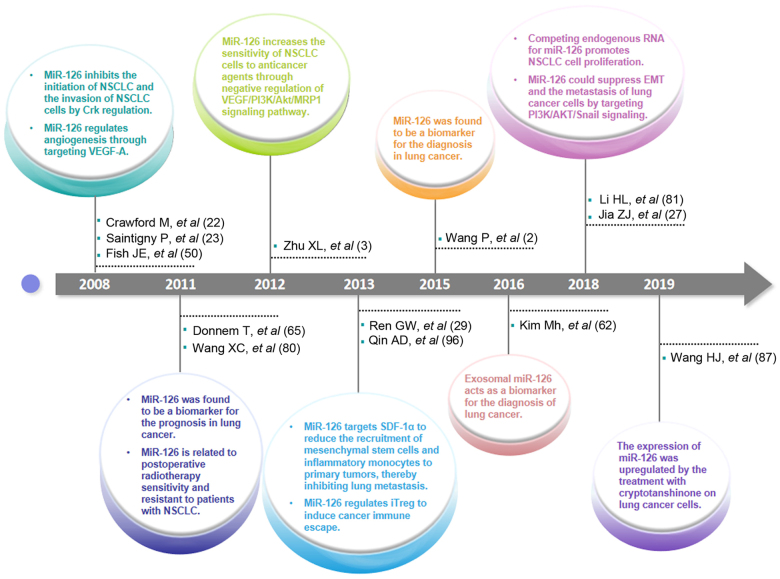Figure 2.
Highlights in the research progress of miR-126 in lung cancer. In 2008, it was first mentioned that miR-126 has a significant role in the angiogenesis, initiation and progression of lung cancer, as well as lung cancer cell invasion. MiR-126 was viewed as a prognostic biomarker in lung cancer and first reported that it is related to postoperative radiotherapy sensitivity and resistant to patients with NSCLC in 2011. Afterwards, the role of miR-126 in the sensitivity of NSCLC cells to anticancer agents was uncovered in 2012. In 2013, a seminal publication reported the role of miR-126 in the recruitment of mesenchymal stem cells and inflammatory monocytes in lung metastasis. Due to the discovery of the role of miR-126 in the lung tumor microenvironment, its role in cancer immune escape which is mediated by iTregs was found. Thereafter, miR-126 and exosomal miR-126 were perceived as diagnostic biomarkers for lung cancer since 2015 and 2016, respectively. In 2018, reports about competing endogenous RNA for miR-126 promoting NSCLC cell proliferation and the role of miR-126 in EMT and the metastasis of lung cancer cells were published. In 2019, changes in the expression level of miR-126 in lung cancer cells following treatment with cryptotanshinone were reported. miR, microRNA; NSCLC, non-small cell lung cancer; EMT, epithelial-mesenchymal transition; Crk, v-crk sarcoma virus CT10 oncogene homologue; VEGF, vascular endothelial growth factor; VEGF-A, vascular endothelial growth factor A; MRP1, MRP1, resistance-associated protein 1; SDF-1α, stromal cell-derived factor-1α; i-Treg, induced T regulatory cell; AKT, protein kinase B; PI3K, phosphatidylinositol-3 protein kinase.

